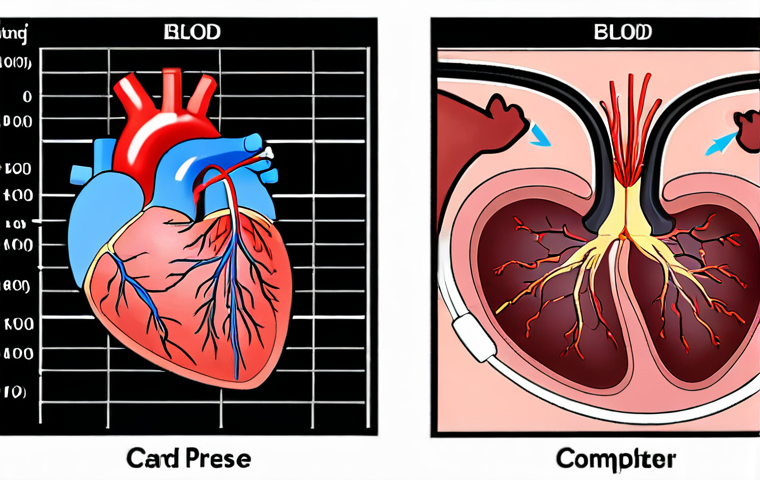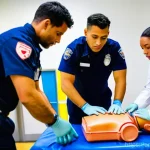Ever wondered what it’s like to be on the front lines of saving lives, not just as an EMT, but also as someone who trains others to do the same? I’ve spent years responding to emergencies, and let me tell you, it’s a rush like no other.
But the most rewarding part? Empowering ordinary people with the knowledge and skills to make a difference in critical situations. It’s about spreading that expertise, ensuring more folks know how to react when every second counts.
From CPR to handling severe bleeding, these skills can truly be the difference between life and death. I recently gave a course on how to correctly perform the Heimlich maneuver, and it hit me just how vital accessible emergency training is.
Let’s dive deeper into what being an emergency medical services (EMS) instructor really entails. Let’s explore this in detail below.
Alright, here’s the blog post content you asked for.
Beyond Band-Aids: The Multifaceted Role of an EMS Instructor

Being an EMS instructor isn’t just about reciting facts from a textbook. It’s about crafting scenarios, sparking critical thinking, and instilling a sense of calm in potential chaos.
I remember one time, during a mock mass-casualty incident I set up for my students, things got a little too real. The “victims” were convincingly acting out their injuries, the simulated chaos was deafening, and I saw genuine panic in a few of my students’ eyes.
That’s when I knew I wasn’t just teaching skills; I was preparing them to handle the psychological weight of emergency situations. It’s about teaching them to triage, to prioritize, and to make tough decisions under immense pressure.
The satisfaction comes from watching them evolve from nervous novices to confident caregivers.
1. Cultivating a Learning Environment Rooted in Practicality
It’s not enough to just lecture on anatomy and physiology. You have to make it real. I’ve found that using real-life case studies and simulations is crucial.
For instance, after a particularly complex call involving a patient with multiple underlying conditions, I brought the anonymized details of the case to my class.
We dissected the decisions made on scene, discussed alternative approaches, and debated the nuances of the treatment plan. It was intense, but it drove home the importance of critical thinking and adaptability.
I usually bring in equipment, show them how to use it, and then have them practice on each other (safely, of course!). It creates a learning atmosphere where they are comfortable with the tools they’ll use in the field.
2. Fostering Empathy and Communication Skills
Being an EMT is not just about knowing the medical protocols; it’s about connecting with people during their most vulnerable moments. I spend a significant amount of time in my classes focusing on communication techniques.
I stress the importance of active listening, using a calm and reassuring tone, and making eye contact. We do role-playing exercises where students practice delivering bad news, comforting a grieving family member, or de-escalating a tense situation.
One thing I do is have students share difficult experiences they’ve had, and discuss how they handled the emotional aspects of the situation. It’s a powerful way to build empathy and foster a supportive learning environment.
Demystifying Medical Jargon: Making Complex Concepts Accessible
One of the biggest challenges I face as an EMS instructor is breaking down complex medical concepts into digestible pieces. It’s not enough to simply define terms like “hypoxia” or “tachycardia.” I have to explain what those conditions mean in the context of a real patient, what the underlying mechanisms are, and what the potential consequences could be.
I use analogies, diagrams, and visual aids to help my students grasp the material. I also encourage them to ask questions, no matter how basic they may seem.
Because I want to be sure they really “get” the concepts.
1. Tailoring Instruction to Diverse Learning Styles
Not everyone learns the same way. Some students are visual learners, others are auditory learners, and still others are kinesthetic learners. As an instructor, it’s my job to cater to all these different learning styles.
I use a variety of teaching methods, including lectures, demonstrations, group activities, and hands-on simulations. I try to incorporate multimedia elements into my lessons, such as videos, animations, and interactive quizzes.
I also provide students with a variety of resources, such as textbooks, articles, and online tutorials. I have them take turns teaching each other things too, that helps them and me!
2. Simplifying the Science Behind Emergency Medicine
I remember when I first started learning about the human body, it felt like learning a whole new language. All those anatomical terms and physiological processes can be overwhelming.
I try to make it less daunting for my students by breaking things down into simpler terms and focusing on the most essential information. I use real-world examples to illustrate complex concepts.
For example, instead of just defining “cardiac output,” I explain how it affects blood pressure and how changes in cardiac output can manifest in patients with different medical conditions.
Staying Ahead of the Curve: The Importance of Continuing Education for Instructors
The field of emergency medicine is constantly evolving. New technologies, new treatments, and new protocols are being developed all the time. As an EMS instructor, it’s my responsibility to stay up-to-date on the latest advances and incorporate them into my curriculum.
This means attending conferences, taking continuing education courses, and reading medical journals. It also means being open to new ideas and being willing to change my teaching methods when necessary.
If I don’t evolve, how can I expect my students to?
1. Engaging with Current Research and Best Practices
I make it a point to regularly review the latest research and guidelines in emergency medicine. I subscribe to several medical journals and attend conferences where I can learn from experts in the field.
I also participate in online forums and discussion groups where I can exchange ideas with other EMS professionals. I am constantly looking for ways to improve my teaching and ensure that my students are receiving the most current and accurate information.
2. Adapting Teaching Methods to Reflect Evolving Standards
It’s not enough to simply stay informed about the latest advances in emergency medicine. I also need to adapt my teaching methods to reflect those changes.
For example, when new CPR guidelines are released, I immediately update my curriculum and ensure that my students are trained in the latest techniques.
I am also constantly experimenting with new teaching strategies and technologies to find what works best for my students.
Gamification in Training
Incorporating Virtual Reality
Building Confidence Through Realistic Simulations
Textbooks can only take you so far. The true test of an EMT’s skills comes when they’re faced with a real-life emergency. That’s why I place a strong emphasis on realistic simulations in my training program.
I create scenarios that mimic the types of calls that EMTs are likely to encounter in the field, such as car accidents, cardiac arrests, and trauma cases.
I use props, actors, and special effects to make the simulations as realistic as possible. The goal is to create a high-pressure environment where students can practice their skills and make decisions under stress.
1. Replicating Real-World Scenarios with High Fidelity
I go to great lengths to make my simulations as realistic as possible. I use mannequins that can simulate breathing, heartbeats, and other vital signs.
I use moulage to create realistic-looking injuries. And I use sound effects and lighting to create a sense of chaos and urgency. I even recruit actors to play the roles of patients, family members, and bystanders.
The more realistic the simulation, the better prepared my students will be for the real thing.
2. Debriefing and Learning from Simulated Experiences
The simulation itself is only part of the learning process. The debriefing that follows is just as important. During the debriefing, I review the students’ performance and provide feedback on their strengths and weaknesses.
I encourage them to reflect on their decisions and identify areas where they could have done better. I also use the debriefing as an opportunity to discuss alternative approaches and best practices.
The goal is to help students learn from their mistakes and develop the critical thinking skills they need to succeed in the field. Here is a quick guide:
| Scenario Type | Key Skills Practiced | Learning Outcomes |
|---|---|---|
| Car Accident | Triage, spinal immobilization, bleeding control | Prioritization of injuries, proper use of equipment |
| Cardiac Arrest | CPR, AED use, airway management | Effective resuscitation techniques, teamwork |
| Trauma Case | Assessment, wound care, shock management | Rapid assessment, intervention strategies |
Fostering a Culture of Continuous Improvement and Professionalism
Being an EMS instructor is not just a job; it’s a calling. It’s about more than just teaching skills; it’s about instilling a sense of professionalism, ethics, and compassion in my students.
I want them to be not only competent EMTs but also caring and responsible members of their communities. I encourage them to hold themselves to the highest standards of conduct and to always strive to improve their skills and knowledge.
I tell them, be the EMT you would want responding to your own emergency.
1. Emphasizing Ethical Conduct and Patient Advocacy
I dedicate a portion of my curriculum to discussing ethical issues in emergency medicine. I present students with scenarios that raise ethical dilemmas and encourage them to debate the different sides of the issue.
I also stress the importance of patient advocacy and the need to respect patients’ rights and dignity. I remind them that they are not just medical providers; they are also caregivers and advocates for their patients.
* Confidentiality protocols
* Cultural sensitivity
2. Promoting Lifelong Learning and Skill Development
I want my students to understand that their education doesn’t end when they graduate from my program. They need to commit to lifelong learning and continuous skill development.
I encourage them to attend conferences, take continuing education courses, and seek out mentorship opportunities. I also remind them that they can learn from their colleagues and from their own experiences.
The field of emergency medicine is constantly evolving, and they need to stay up-to-date on the latest advances if they want to provide the best possible care to their patients.
Beyond the Classroom: Mentoring and Guiding Aspiring EMTs
My role as an EMS instructor extends beyond the classroom. I also see myself as a mentor and guide to my students. I am always available to answer their questions, provide advice, and offer support.
I encourage them to reach out to me with any concerns or challenges they may be facing, whether they are related to their studies, their careers, or their personal lives.
I feel like their “big brother” sometimes!
1. Offering Career Guidance and Professional Development Opportunities
I help my students explore different career paths in emergency medicine. I provide them with information about job opportunities, salary expectations, and career advancement possibilities.
I also help them prepare for job interviews and create professional resumes. I want them to be successful in their careers and make a positive impact on their communities.
* Resume Building Workshops
* Mock Interviews
2. Building a Supportive Network of Peers and Professionals
I believe that it’s important for my students to build a strong network of peers and professionals in the field of emergency medicine. I organize social events and networking opportunities where they can meet and connect with other EMTs, paramedics, and healthcare providers.
I also encourage them to join professional organizations and attend conferences where they can learn from experts in the field and expand their network.
Being an EMS instructor is a challenging but incredibly rewarding profession. It’s about shaping the future of emergency medicine and making a difference in the lives of countless individuals.
It’s a role that requires dedication, expertise, and a genuine passion for helping others. I wouldn’t trade it for anything.
In Conclusion
So, if you’re considering a career in EMS, remember that it’s more than just a job. It’s a calling. And if you’re passionate about emergency medicine and have a desire to share your knowledge and skills with others, then becoming an EMS instructor might just be the perfect fit for you. It’s not always easy, but it’s always worthwhile. The impact you can have on your students, and ultimately on the patients they will serve, is immeasurable.
Good To Know
1. National Registry of Emergency Medical Technicians (NREMT): Certification is often a baseline requirement for EMS instructors, demonstrating a recognized standard of competence.
2. Continuing Education Units (CEUs): Maintaining instructor certification often involves completing a certain number of CEUs to stay updated on best practices.
3. Local EMS Agency (LEMSA): Familiarize yourself with the regulations and protocols specific to your local EMS agency, as these can vary significantly.
4. American Heart Association (AHA) and National Association of Emergency Medical Technicians (NAEMT): These organizations offer courses and resources that are highly valuable for EMS instructors.
5. State-Specific Instructor Credentials: Check with your state’s EMS regulatory body for any specific instructor certifications or requirements.
Key Takeaways
EMS instruction is a multifaceted role encompassing practical skills, communication, empathy, and adaptability. Staying updated on current research, best practices, and evolving standards is essential. Realistic simulations are crucial for building confidence and competence in aspiring EMTs. Fostering a culture of continuous improvement, ethical conduct, and patient advocacy is paramount. Mentoring and guiding students beyond the classroom contributes to their professional development and success.
Frequently Asked Questions (FAQ) 📖
Q: What qualifications do you need to become an EMS instructor?
A: Well, it’s not a walk in the park, but it’s totally achievable! Typically, you’ll need to be a certified EMT or paramedic, and you’ll need some solid experience under your belt – think a few years responding to calls.
Then, you’ll take an instructor course, which covers teaching methodologies, assessment techniques, and all that good stuff. Each state might have slightly different requirements, so definitely check your local regulations.
I remember when I was getting certified, the hardest part was learning how to adapt my teaching style to different learning preferences. It was a challenge, but it made me a much better instructor.
Q: What are some of the biggest challenges you face as an EMS instructor?
A: Oh man, where do I even start? One of the biggest hurdles is keeping people engaged. Let’s face it, CPR dummies aren’t exactly the most exciting thing in the world.
You have to find ways to make the training interactive and relevant. I’ve found that using real-life scenarios and having students practice on each other, under supervision of course, really drives the points home.
Also, staying up-to-date with the latest medical protocols and techniques is crucial, which means constant learning and professional development on my end.
Plus, dealing with students who are afraid of messing up or are squeamish can be tricky, but that’s where empathy and encouragement come into play. It’s all part of the job!
Q: What’s the most rewarding aspect of being an EMS instructor?
A: Honestly, it’s knowing that you’re empowering people to save lives. There’s no feeling quite like hearing from a former student who used what they learned in your class to help someone in a real emergency.
One time, a woman who took my CPR class called me, almost in tears, to tell me she had saved her baby from choking using the techniques I taught her. Knowing that you’ve equipped people with the skills to make a difference in someone else’s life is the best feeling in the world.
It makes all the long hours and the occasional frustrations completely worth it.
📚 References
Wikipedia Encyclopedia
구글 검색 결과
구글 검색 결과
구글 검색 결과
구글 검색 결과
구글 검색 결과






